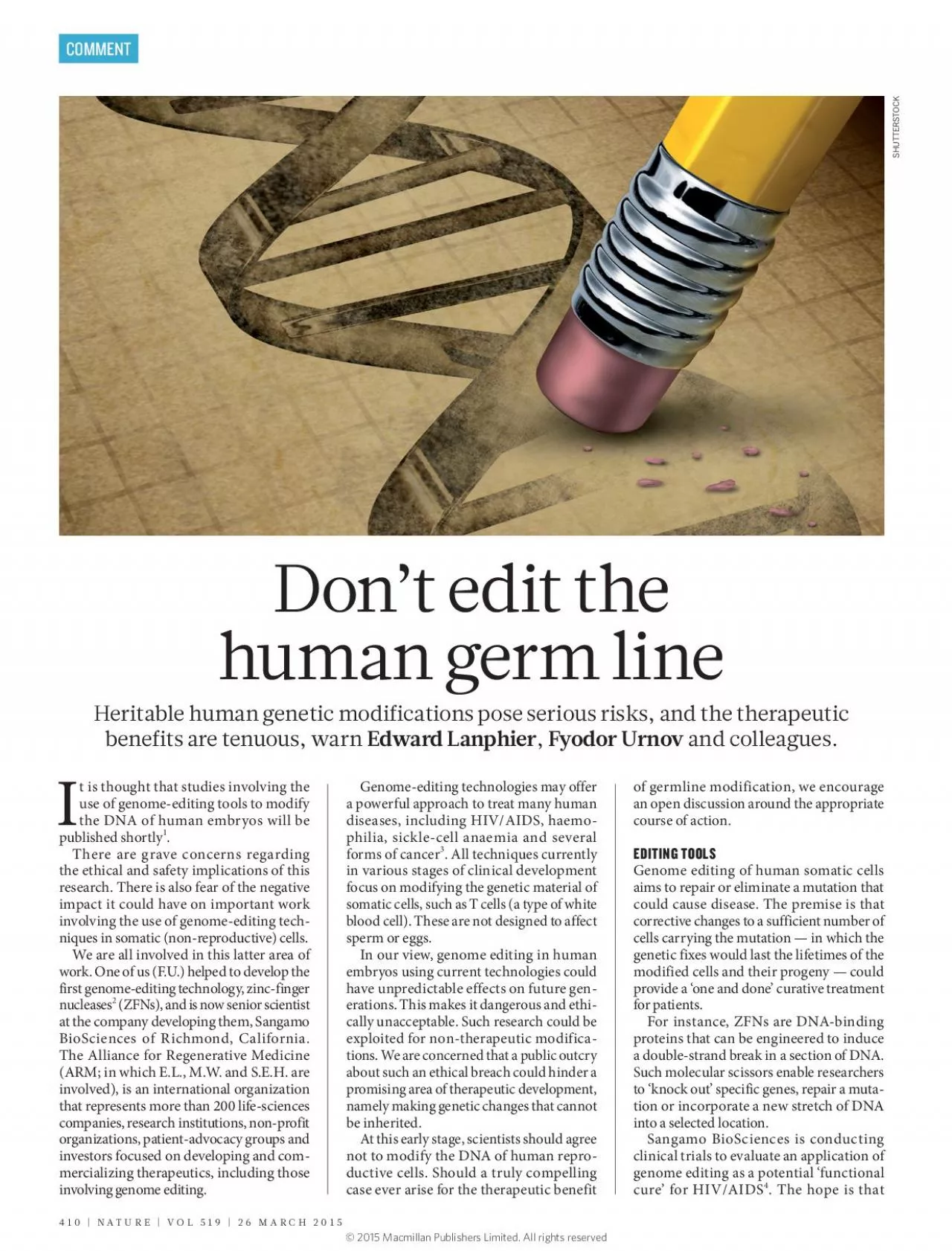

in animals such as rats the precise effects of genetic modification to an embryo may be impossible to know until after birth Even then potential problems may not surface for years Established meth ID: 958625
Download Pdf The PPT/PDF document "proteins that can be engineered to induc..." is the property of its rightful owner. Permission is granted to download and print the materials on this web site for personal, non-commercial use only, and to display it on your personal computer provided you do not modify the materials and that you retain all copyright notices contained in the materials. By downloading content from our website, you accept the terms of this agreement.
proteins that can be engineered to induce a double-strand break in a section of DNA. Such molecular scissors enable researchers to Ôknock outÕ specific genes, repair a muta-tion or incorporate a new stretch of DNA into a selected location. Sangamo BioSciences is conducting in animals such as rats the precise effects of genetic modification to an embryo may be impossible to know until after birth. Even then, potential prob-lems may not surface for years. Established methods, such as standard prenatal genetic However, in nations with policies regarding inheritable genetic modification, it has been prohibited by law or by measures having the force of law. This consensus is cially prohibited germline modification, the US National Institutes of HealthÕs Recombi-nant DNA Advisory Committee explicitly states that it Òwill not at present entertain proposals fo
r germ line alterationsÓ (see go.nature.com/mgscb2). In general, researchers who want to inves-tigate the clinical uses of genetically engi-neered somatic cells must secure peopleÕs informed consent. In the United States, this takes place under the oversight of the Food and Drug Administration and the Depart-ment of Health and Human Services. For research involving genetic modification of the germ line, it is unclear what informa-tion would be needed Ñ or obtainable Ñ to adequately inform prospective parents of the risks, including to future generations. Many oppose germline modification on the grounds that permitting even unambiguously therapeutic interventions could start us down a path towards non-therapeutic genetic enhancement. We share these concerns. DIALOGUE NEEDEDTen years ago, the Genetics and Public Pol-icy Center, now in Washington DC, brought